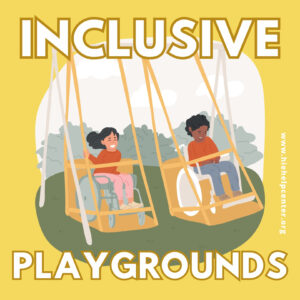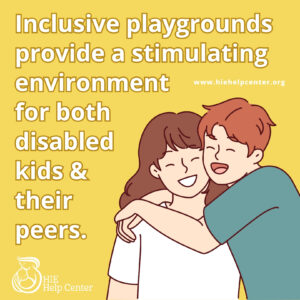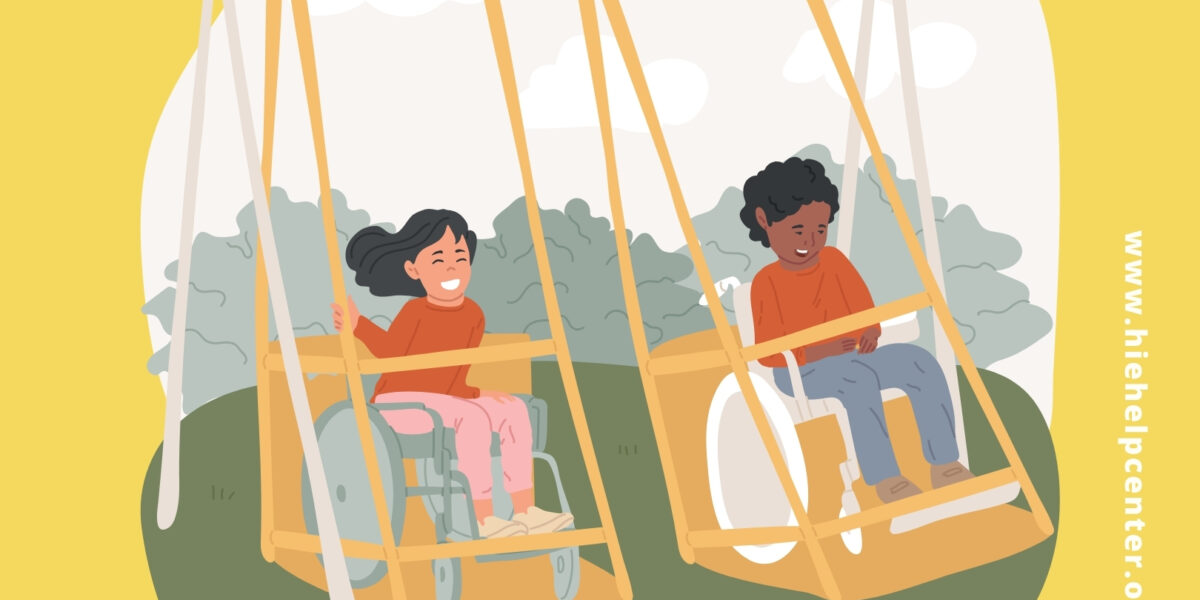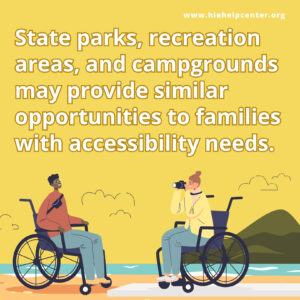 Playgrounds help children stay active outside of school. They provide a place for children to learn and use valuable social skills as they interact with other kids. One key concern for parents of disabled children is whether or not these spaces will be accessible for their child.
Playgrounds help children stay active outside of school. They provide a place for children to learn and use valuable social skills as they interact with other kids. One key concern for parents of disabled children is whether or not these spaces will be accessible for their child.
 Traditional playgrounds may have stairs, bungee walls, or sandy surfaces that can make the structures inaccessible to kids that use mobility aids. Inclusive playgrounds attempt to bridge the gap and provide a stimulating environment for both disabled children and their peers. There has been a push to include more accessible playground structures on any new or updated school grounds because many existing structures do not meet ADA accessibility standards. Some grants are available to make these structures more accessible, but in many cases funding comes from local school districts and communities.
Traditional playgrounds may have stairs, bungee walls, or sandy surfaces that can make the structures inaccessible to kids that use mobility aids. Inclusive playgrounds attempt to bridge the gap and provide a stimulating environment for both disabled children and their peers. There has been a push to include more accessible playground structures on any new or updated school grounds because many existing structures do not meet ADA accessibility standards. Some grants are available to make these structures more accessible, but in many cases funding comes from local school districts and communities.
Every child should enjoy playtime! Inclusive playgrounds allow for all children to experience the physical, social, and mental benefits of a playground. When a playground can cater to different abilities, all children can feel welcome and play with others who may be different.
What makes a playground inclusive and accessible?
An accessible playground means that anyone can get to the playground and move through it, regardless of their ability to walk or use of mobility devices.
An inclusive playground allows children of all ages and abilities to play. The play environment caters to children of any gender, with and without disabilities. Playgrounds with inclusive design allow families to play together, too.
Principles of Inclusive Design
Seven principles of inclusive design guide the layout and features of an inclusive playground. An inclusive playground relies on these principles to be a fun playground that any child can enjoy comfortably.
- Equitable Use
- Children with a range of abilities can interact with the playground structures. Children can all reach various play elements, whether they are tall, short, or if they have a mobility device. For example, a multi-level play table has spaces for taller children or for someone in a wheelchair. A slide on a play structure can be reached by a gentle slope, a climbing net, or a ladder.
- Flexibility in Use
- The playground has many options for how to play. Children can choose between high and low risk play, like standing on a balance beam or sitting on it. Interactive stations like musical instruments or turning gears can be used from sitting or standing.
- Simple and Intuitive Use
- The playground features are distinct and don’t require complicated instructions or careful focus to use. The playground is easy to navigate, and it’s easy to find handrails or transfer platforms for anyone who needs them.
- Perceptible Information
- Different playground features have clear or contrasting colors. Anyone can easily tell them apart or identify them when giving directions.
- Tolerance for Error
- The playground is generally safe, and there are healthy risk-taking play elements for children of varying ability and age. Even if a child doesn’t use the equipment as intended, the design minimizes the risk of an accident.
- Low Physical Effort
- An inclusive playground has parts of the play structure that allow anyone to exert as much effort as they can or want to reach their destination. Playground features can still have variable difficulty. Children can challenge themselves if they want, but not be locked out of playtime otherwise. There should be easy paths that are comfortable for everyone and elements that don’t rely on repetitive motion.
- Size and Space for Approach and Use
- The playground has plenty of space for children to approach, steady themselves, or park a mobility device. Interactable pieces are within reach whether the child is sitting or standing, and the pieces can work for different hand sizes or grip strengths.
How can I find inclusive playgrounds near me?
To find an inclusive playground near you, use www.accessibleplayground.net’s Playground Directory, which provides a list of accessible playgrounds both in the United States and worldwide. An internet search for ‘accessible or inclusive playground’ in your local area may also provide the most up-to-date answers.
Accessibility at state parks, historic sites and recreation areas
While they are not equivalent to inclusive playgrounds, state parks, recreation areas, and campgrounds can provide similar opportunities to families who have specific accessibility needs when embarking on outdoor adventures. Public lands managed by local Departments of Natural Resources often are accessible in some, if not all, portions of land. Individual state Departments of Natural Resources may provide listings that delineate each state park’s accessibility features. Check out accessible parks in:
Related reading:
- Adaptive Sports
- Occupational Therapy
- Seizure Dogs: How can they help?
- Summer Camps for Disabled Kids


 California
California